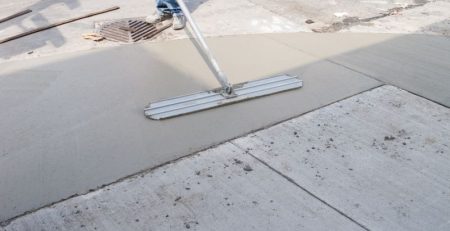Does Rendering A House Require Planning Permission?
Does Rendering A House Require Planning Permission?
House render, whether it’s an extension or a complete renovation, can be very time-consuming and costly and the costs involved with house rendering are not just limited to the materials but also include the labour needed to put everything together, including plastering, sanding & painting. This article will help you decide if it’s worth spending the money on rendering your property and what type of render that suits you best.
What does rendering mean?
Render means applying a coat of paint/varnish over an existing wall surface. It can refer to both exterior (exterior walls) and interior (walls inside). In order to achieve a smooth finish, the old/existing paint has to be removed prior to coating.
This process is called ‘rendering’. The amount of work required depends on how much of the original paint remains and the quality of this paint. If there is more than 50% remaining then it is considered a rough render.
Rough renders may have some scuffs and scratches but do not need to be completely scraped off. A rough render should be sanded down to remove any excess paint. Sanding is done using various grits ranging from 180grit up to as high as 4000-5000 grit.
To ensure the new paint adheres properly, it must first be primed. Primer is applied directly onto the substrate. Once the primer is dry, the final colour coats can be applied.
Types of Render
- Acrylic render – is usually used on external surfaces such as fences or garage doors.
- Exterior render – this refers to the outside of the building.
- Internal – refers to the inside of the building.
- Pre-mixed – these paints are ready made which saves a lot of preparation time.
- Feature Walls – these walls are designed to look like bricks or stone.
- Painted – this is usually used on floors and ceilings.
- Coloured render – these colours are either pre-chosen by the painter or custom-made to match your own scheme. • Colour Schemes – These are collections of colours that make a pleasing combination when combined.
What is planning permission?
Planning Permission to render your home is one of the most important aspects of rendering any property. Planning permission is the legal requirement to carry out certain works without having to notify the local council. For example, if you want to build a fence around your garden, you would need to apply for planning permission.
When it comes to House render, however, planning permission is generally only needed where there is a change of use, i.e. you move into a new residence and decide to add an extension. This means that the majority of people who undertake a major investment project such as rebuilding their kitchen or bathroom, adding another storey to their house etc., won’t need planning permission.
However, there will still be some restrictions, especially in relation to creating additional space within their dwelling. An example might be they cannot extend their living room further than the width of the main doorway.
Another restriction is that no changes can be made to the surrounding area unless they affect the landscape and this could include removing trees, planting new ones or extending paths. You also need to check that any alterations to the roofline or other architectural features don’t alter the appearance of neighbouring properties.
What’s the process like for getting planning permission?
Before undertaking any development work at all, the first thing you’ll need is to obtain planning consent. This is mandatory before starting any construction work and allows you to proceed with the plan while avoiding unnecessary delays and costs.
Obtaining planning permission involves preparing evidence that shows the sufficient reason why the proposed work is necessary and proportionate. Examples of reasons why you might want to develop your property could include: providing additional bedrooms, increasing ventilation or improving energy efficiency. Other reasons might include: making the home suitable for disabled access, ensuring the property conforms to current planning policy or reducing noise pollution.
Once you’ve collected the relevant evidence, you’ll submit a request to the local authority so that they can consider the application and provide advice about what impact the proposal will have on the environment and how it meets the requirements of a sustainable future.
The planning officer may then recommend approval of the plans or advise against them, which will allow you to take appropriate steps with regard to the decision. If the plans are approved, they will be recorded in the official planning register and you will receive notification from the office.
To avoid any problems with planning permissions in the future, we highly recommend obtaining third-party surveyors’ opinions and specialist drawings for your project. This will help ensure that everything is completed correctly prior to submitting your application.
How much does rending cost?
The cost of rendering varies depending on the size of the job and the design of the property. It’s always recommended to seek professional advice before starting the job. If you’re looking at doing your own DIY render, it may seem simple enough, but the reality is that all jobs are different and can sometimes leave you with unexpected costs.
House Rendering Cost
Some factors which influence the price of house rendering include:
- Size of the Job: Larger houses tend to take longer to complete than smaller homes. Therefore, the cost per square metre is higher.
- Quality of Paint Used: There are many types of paint available and each type of paint has its own strengths and weaknesses. Generally speaking, acrylic paint is cheaper and easier to apply than semi-gloss or gloss paint. Semi-gloss and gloss paint is more expensive because they provide better coverage and offer a smoother finish.
- Type of Wall Surface: Most renderings involve covering brickwork and block paving. The cost of covering these materials is relatively cheap compared to covering concrete or timber. Cement renders are usually the most expensive option and are normally used where very high-quality finishes are required (i.e. stone/stucco).
- Colour Scheme: Different colour schemes demand specific paints and this can either increase or decrease the overall cost. For example, if you choose a bright red scheme then you’ll need to use brighter colours like burgundy and vermillion. These colours cost considerably more than the standard white colour.
Materials Required:
Each material requires specific tools and equipment so it’s best to have them covered in advance. Some of the most common items include:
- Roller/ Trowel – A roller and trowel are essential for applying render to bricks and blocks.
- Sandpaper – To get a smooth finish on the render once applied.
- Sponges – For cleaning up after applying the render.
- Sprayers – For spraying the finish onto the render once applied. They come in various sizes and shapes including multi-function sprayers.
- Filler – To fill holes caused by expansion joints in brickwork.
- Trimming Shears – To cut excess trim away.
It’s always advisable to discuss your options with a contractor as well as get quotes from several contractors, before making a decision about how to proceed.
What do I need to know when hiring render contractors?
When hiring a render contractor, ask yourself the following questions;
- Do they have experience working for me? – Contractors are often hired based on past clients’ references. These references should be checked online prior to meeting the contractor.
- Are they insured and registered? – Make sure that any contractors carrying out work on your property is fully insured and licensed by relevant government authorities.
- What warranties are offered? – Warranties cover things like labour, materials & guarantees. Ask what the warranty covers and if it includes damage to your exterior walls during the course of the repair.
- Can they give me a written estimate? – Estimate forms are provided by all major building associations and local councils. You should expect an accurate quote within 24 hours. Your quote will state whether or not any additional charges will be incurred due to unforeseen changes.
- Who will carry out the job? – It is important to make sure you understand who is going to perform the work. Will it be one person, two people, or even three? When viewing estimates ensure that the person providing the quote is clearly identified as either the “principal tradesperson” or “subcontractor”.
- How long does the project generally take? – As mentioned above, larger projects usually take longer to complete than small ones. Again, this is something you should check on both sides of the fence before signing off.
- Does the contractor have enough time to complete the job? – If the answer is no then it could jeopardise the overall outcome of the project. This is especially true in Melbourne where we have extreme weather conditions which can lead to cracking and premature deterioration of masonry structures.
- Can I inspect the site first? – Ideally yes! However, there may be times when this isn’t possible. In those cases, at least go along to view the progress and provide feedback.
- Is there anything else I need to consider? – There are many other factors to consider when selecting a contractor including:
- Will the contractor charge extra fees for late delivery?











